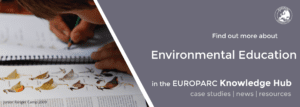Transboundary Parks Award 2019 – Binntal Veglia Devero Transboundary Nature Park
Award Ceremony at EUROPARC Conference 2019 - Welcome to the new Transboundary Park! Binntal - Veglia Devero Nature Park
The EUROPARC’s Transboundary Parks Programme aims to promote and facilitate transboundary cooperation between European Protected Areas. Since 2003 when the Basic Standards evaluation system was launched, 23 European Protected Areas have been successfully certified as 10 Transboundary Parks. Every year during EUROPARC Conference we celebrate success with our Transboundary Parks at the Award Ceremony.
In 2018 the Awards goes to…
BINNTAL VEGLIA DEVERO TRANSBOUNDARY NATURE PARK
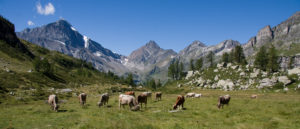
Alpe Veglia, Paolo Pirocchi
The Binntal Veglia Devero Transboundary Nature Park embraces the following Protected Areas:
- Parco Naturale Veglia Devero / Protected Areas of Ossola (Italy)
- Landschaftspark Binntal (Switzerland)
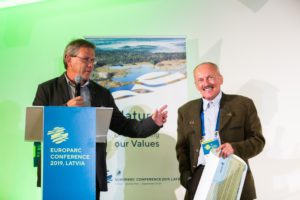
Free animals and men who don’t know borders
Covering a border region in the Alps in Valais and Piemont, the cross border park shows the rich natural and cultural heritage of the area dominated by rocks and glaciers, mountains reaching 3.500 meters high, pastures, and peat bogs.
The green Alpine meadows grazed by cows on both sides of the border, are not just a characteristic postcard image of this area, but also one of the reasons for high biodiversity. Additionally, dairy farming and production of high quality alpine cheese, in combination with tourism, plays a key role in the regional economic development.
Men from Lepontine Alps walk together, study together, protect and celebrate together. Without borders.
Although the common transboundary politics on nature management formally started in 2013, the parks have been cooperating even before. “Men from Lepontine Alps walk together, study together, protect and celebrate together. Without borders,” explains the Directorate of Protected Areas of Ossola.
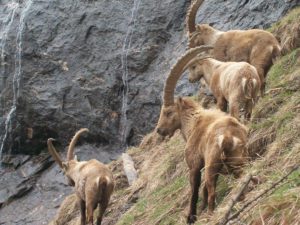
Fauna in the Alps
The Transboundary Park certification is the recognition of the politics for a regional and sustainable development, which protects nature, promotes cooperation and international peace.
Chamois and ibex, wild animals of the Alps, move freely from one side to the other.
In these years, when the Alps are suffering from climate changes, the transboundary cooperation allowed a better management of the alpine biodiversity throughout common monitoring actions and a continuous exchange of scientific information and management experiences.
Promoting sustainable business and tourism
The main goal of this transboundary cooperation is to maintain and develop the quality of the natural landscapes, and to promote sustainable business and tourism, and foster environmental education. Tourists are attracted by the Park’s perfect environment for alpine walking, snowshoe walking, or cross country skiing on trails. The core zones of the sparsely populated Park are still relatively quiet, since car access to the Alps is only allowed to residents.
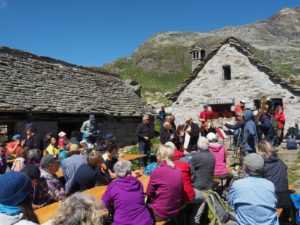
Alpe Devero, Ivano De Negri
The parks currently work on training for guides, who are able to operate on both alpine sides. As the two parks are located in relatively remote areas and no easy access from cities, a special emphasis is put on their promotion, mainly through initiatives in urban areas.
For example, the event “Parks in the city” is held in Italy and Switzerland alternately every year. “Autumn street market” in Switzerland and “Mele&Miele” in Italy are events focusing on cultural development, while transboundary walking tours such as “Arbola walk” through alpine gaps or “Pastures and cheese” are organised to support the development of mountain agriculture.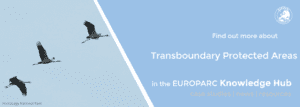
Alfred Toepfer Natural Heritage Scholarships: Winners 2019
The winner of the Alfred Toepfer Natural Heritage Scholarship in Jurmala, Latvia - EUROPARC Conference 2019
Each year the EUROPARC Federation, with support from the Alfred Toepfer Stiftung F.V.S., awards three Alfred Toepfer Natural Heritage Scholarships to promising young conservationists, who are committed to working for the benefit of Protected Areas. The aim of the scholarships is to enhance international cooperation and to advance the quality, innovation and European dimension of Protected Area (PA) management.
Alfred Toepfer Natural Heritage Scholarships winners 2019
Myrthe Fonck has been working as Ecologist and nature advisor at PWN (Zuid-Kennemerland National Park) for the past two years. Her main activities include advisory tasks regarding nature and recreation management, research and strategy. During her study visits to the UK, Sweden and Italy, Myrthe wants to investigate the potential of citizen science for nature conservation, and understand the requirements for successful citizen science projects.
Citizen science has the potential to attract and involve younger generations.
Educated as a researcher, she believes that science offers an excellent opportunity to involve local residents, and especially the younger generations, in conservation activities. As the outcome of her study, Myrthe hopes to integrate the techniques such as crowd sourcing and volunteer thinking into regular PA management practices.
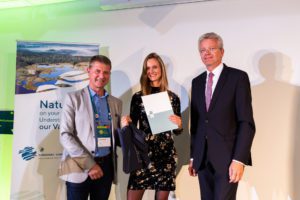
Sustainable Development in Protected Areas
Marie Micol is a Future Landscapes Project Assistant at National Association for Areas of Outstanding Natural Beauty. At the moment, she is also finishing her Postgraduate Diploma in Conservation and Forest Protection at Harper Adams University. Through the study visits to parks and nature reserves in France, Italy, Germany and the United Kingdom, Marie aims to develop a framework for landscape management approaches, replicable in different regions based on the different perceptions of “landscape” across Europe.
Landscape approaches encompass social, economic and environmental processes managed towards sustainable development.
She works on the assumption that some cultures naturally bring stakeholders together and collaborate to deliver integrated landscape management, whilst others initiate this approach rather after a legislative or institutional change. Her report should allow Protected Areas around Europe to develop their individual thinking about landscape management and facilitate the implementation of the European Landscape Convention.
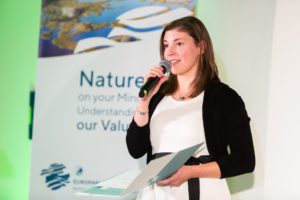
Parks for People
Matthew Ross works as Learning & Discovery Ranger at Peak District National Park, which means that he delivers and coordinates school visits, Junior Rangers, family events and community outreach. To improve his work, Matthew would like to study how different parks engage their visitors, especially young people and urban communities.
Engaging young people with our special landscape is the key to a sustainable future for our environment and our society.
For his study visits, he chose Sächsische Schweiz in Germany and Duna-Ipoly Nemzeti Park near Budapest because of their particular “Periurban Park” status. As the outcome, Matthew hopes to produce a booklet that will compare and contrast the ideas, strategies and methods of the three parks, and share examples of engagement work with practical ideas and inspiration for other parks.
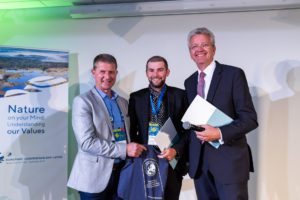
Junior Ranger Case Studies: Cairngorms National Park
To provide guidance and information on how to run the Junior Ranger programme, EUROPARC started to gather case studies describing how the programme is structured and managed in different parks.
These case studies, in form of short interviews, are mainly intended to provide inspiration and ideas to Protected Areas willing to start the programme.
About Junior Ranger Cairngorms
The Cairngorms National Park Junior Ranger Project has been running since 2009. We set it up to provide an opportunity for young people to act as Ambassadors for the national park, learn about its special qualities and to find out about the Ranger profession.
The programme is delivered by Ranger Services across the whole of the national park. We have 5 Junior Ranger groups operating in the park.
The Junior Ranger Programme provides an opportunity for young people to act as Ambassadors for the national park, learn about its special qualities and to find out about the Ranger profession.
How do you recruit young people? How many Rangers/Mentors are involved and how many Junior Rangers?
The young people are recruited through their high school as each Junior Ranger Group is based around the school catchment area. There are 5 groups in total and each year 70 young people take part in the programme. There are 12 Ranger Services and 4 other partners involved in delivering the 5 programmes across the park.
How are your activities organised? How many times you meet? What kind of activities do you do?
Each of the 5 groups has a 5 day non-residential programme once a year. This is followed by a voluntary programme of activities and events such as camps and conservation days.
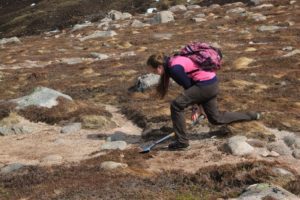
The 5 day programme consists of conservation and adventurous outdoor activities and is based around the 4 Challenges of the John Muir Award.
What are the main results and benefits for young people and for the Protected Area?
Increased understanding and awareness of the special qualities of the Cairngorms. Increased confidence and self-esteem, skills and knowledge gained and social skills improved through working with other young people.
The Junior Rangers develop confidence and self-esteem, and improve their social skills through working with other young people.
What are the main costs and how do you finance them?
The main costs are transport as the park is very large! These costs are covered from the core funding of the Cairngorms National Park Authority. Junior Ranger uniform and outdoor activities are also a considerable costs – these too are covered by the park authority.
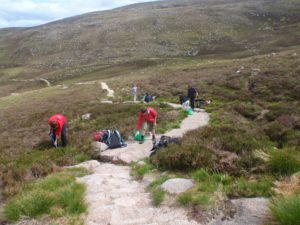
Would you like to share any other useful information?
The opportunity to go on camps and meet other Junior Rangers is really important and a great motivation to keep young people involved. This too is the case for having the Youth+ programme and the opportunity for progression.
Do you also want to share your experience with running the Junior Ranger Programme in your park? We will be happy to spread your ideas around – just drop us a mail: f.minozzi@europarc.or
Junior Ranger Case Studies: Kullaberg Nature Reserve
Excursion to explore life on the beach.
To provide guidance and information on how to run the Junior Ranger programme, EUROPARC started to gather case studies describing how the programme is structured and managed in different parks.
These case studies, in form of short interviews, are mainly intended to provide inspiration and ideas to Protected Areas willing to start the programme.
About Junior Ranger Kullaberg
Kullaberg Nature Reserve started the Junior Ranger Programme in 2012 and in 2014 the local scout group was asked to join it. In the first years, the programme consisted mainly of scouts doing volunteer work during the summer, helping the park management and at the visitor centre.
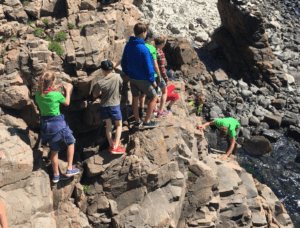
Exploring the cliffs and caves of Kullaberg.
The good thing about cooperating with the scouts is that we reach many young people. The hard part is distinguishing the Junior Ranger work from the ordinary scout activities. “When am I a Junior Ranger and when am I a scout?”
How are your activities organised?
In the last two years Kullaberg Junior Rangers have organised Junior Ranger weeks in the summer – five day-camps led by a mentor and focusing only on the EUROPARC Junior Ranger programme to distinguish it from the scout activities. Every week included parts of learning about nature and the PA, doing practical work and nature conservation and of course having fun.
Our activities include work in the nature reserve, nature conservation, beach cleaning events as well as bird watching, bat excursions and workshops.
Over the rest of the year Junior Ranger activities take place more or less every month. Some are included in the scout program, while some are not. These activities include work in the nature reserve, nature conservation, beach cleaning events as well as bird watching, bat excursions and workshops. There is also a weekend Junior Ranger camp in the nature reserve.
How do you recruit young people? How many Rangers/Mentors are involved and how many Junior Rangers?
We have recently started working on opening up the group so that more can join. As well as not all scouts are interested in being Junior Rangers, of course there are also young people who would like to be a Junior Ranger without being a scout. Contacts have been made with a network of nature science teachers in the area to promote the programme in their schools.
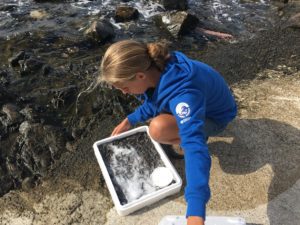
Kullaberg Junior Rangers releasing glass eel in the marine nature reserve.
We will also use social media to attract more young people with the goal of having 20 junior rangers and 20 volunteer rangers. We are aiming to start a Youth+ programme next fall. All this will require more rangers/mentors involved than there is today.
What are the main results and benefits for young people and for the Protected Area?
The participation in the Junior Ranger programme provides knowledge about the PA, extends the young people’s network and gives them new skills in presentation and much more. The exchange camps have been arranged to provide the young people with a wider network and enhance their feeling of engagement and understanding of EUROPARC on a broader perspective.
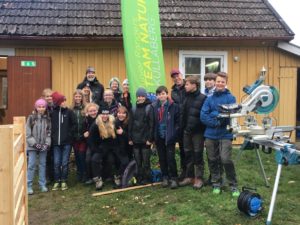
Preparations to build a shed for firewood at a popular campsite where the Kullaberg Junior Ranger team previously has built a fireplace and removing old insecure fireplaces.
What are the main costs and how do you finance them?
The main costs are connected to providing the Junior Ranger groups with the mentor for the summer day-camps as the mentor is not employed by the park. We strongly believe that it is necessary to have the mentor at all times during the camps to provide a necessary continuity for the young people.
There are also some costs connected to arranging exchange camps. Due to lack of funding we do not have as much equipment (bat detectors, binoculars etc.) as we would like to but we are trying to get money from different foundations that may be prepared to support the Junior Ranger work.
Do you also want to share your experience with running the Junior Ranger Programme in your park? We will be happy to spread your ideas around – just drop us a mail: f.minozzi@europarc.org
